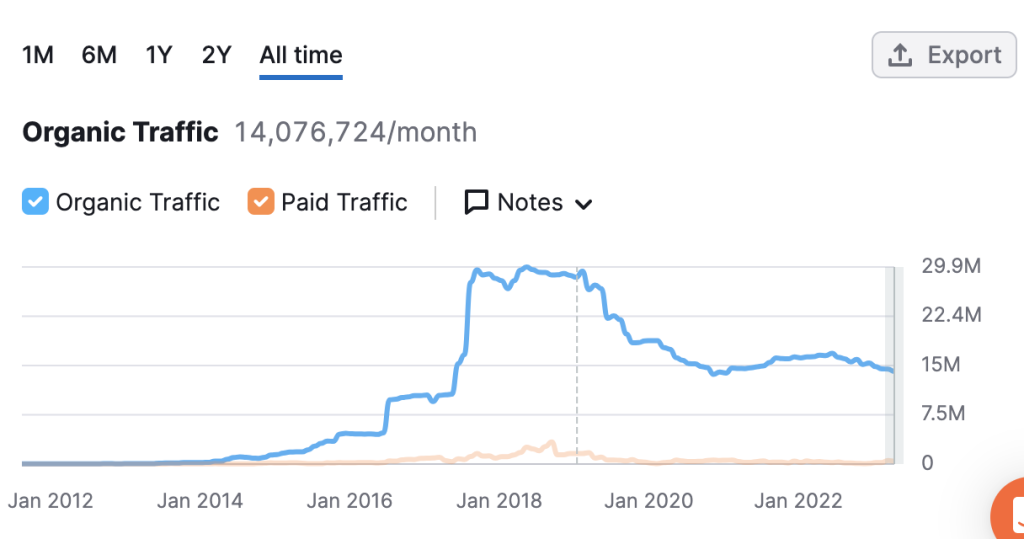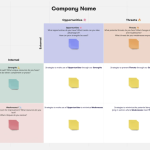What is competitive research?
Competitive research is one of the methods of marketing research. If you are a business owner, startupper, or just a marketing manager – competitive research is the first thing that you need to do.
You need competitive analysis to
- Understand the landscape of the market. Here you can find insides on industry trends for your business.
- Identify gaps and opportunities for your business. For example, you can identify which segments of potential users are underserved or figure out the new segment that will be satisfied with your product. Or find new product features and improve your product offering.
- Figure out if there is room for improvement or if you should change your course entirely. Sometimes after research, you can get an idea to create a new product if you see a fall in demand not only in your product but also in competitors’ products too.
How to do a Competitive Analysis: Step by Step guide
Step 1: Competitors: Direct vs Indirect
First of all, you have 2 types of competitors. They are direct and indirect.
Direct competitors are services that solve the same problem of the same target audience in the same way. For example, it could be Coca-Cola and Pepsi, iOS and Android, Uber and Lyft.
Indirect competitors differ from you with the target audience, the problem of way of solving this problem. In our case, public transport can be a competitor for Uber in case of movement from point A to point B. Even Zoom and Lyft could be competitors if we want to discuss some topic with our colleagues. We can do it both online and offline. Don’t forget, “to do nothing” could be a great competitor too.
Task 1. “List of Competitors”: In that step list 10-20 of your competitors. You can use Google to figure out who else could be found with your desired keywords, or special tools like Semrush to do it faster and deeper. Moreover, this tool could help you with identifying the market share. Don’t forget about indirect competitors. They could bring you new potential customer segments.
Step 2: Gathering information
This is my lovely part. Here you can be like Sherlock Holmes or any of your lovely detectives. Try to find as much information, as possible. No one can help you with the parameters that matter for you. They are very specific and depend on your business.
But as the minimal set of data I recommend you to figure out:
- Company Name & website
- Positioning & Slogan
- Target audience
- Traffic/Clients estimation
- Pricing/Monetisation schema
- Features
- Product interface and payment path
- Customer reviews
- Strengths and weaknesses
At that stage don’t think about ordering. We will do it in the next stage. Now It should be like art. Don’t think about form. Your main task now – to find as much information as possible. I use Miro board and store all competitor’s data as a set of screenshots. Figma is ok too.
Where can I get competitors’ information?
Positioning & slogan. In most cases, you will find it Title and H1 of the main page. How do they tell about them? You should also check their social networks for that purpose. If you know what is SEO you could check their target keywords.

Target audience. Check their “user reviews” and “customer success” blocks. To be sure you can check their LinkedIn community to find the most popular Job Titles among customers. Customer reviews services could help you with this too.

Traffic/Clients estimation. Some companies tell about it on their website. You can estimate the number of clients with social network followers. But I recommend you to use special tools like Semrush or Similarweb. They can give you an estimation of the web traffic and search volume. And one more thing: you can estimate the number of clients if you have your own conversion rate. Just multiply Semrush’s traffic estimation on your conversion and you approximately will find the number of clients of your competitor.

Pricing/Monetisation. It is easy. Just visit their pricing page and read all information about pricing, discounts, monetization, and limits. If pricing is hidden don’t be scared and email/call them to check.
Features/Interface/Payment path. Make a screenshot of every page that you see. How do they promote their product on a landing page? How do they do onboarding? How does their product look like? As a result, you should have a bunch of screenshots. Don’t forget to add notes if something impresses you.
Customers reviews. That is a very significant moment. You should figure out what do they like or don’t like and why they are ready to pay for this product. The main point here is to find characteristics that matter for your potential users. How do they choose products and why?
Task 2. “The Dump” Find as much information on each competitor as possible. Use the list above but don’t be scared to add something new for you. Store all this information unstructured in Miro board. Pay attention to users’ reviews and their selection criteria.
Step 3. Ordering
At this stage, you should create Google Sheet and order all unstructured data. I know, you are so inspired by the previous step but it will be hard for others to figure out what happened there. Now you know clients’ selection criteria and a lot of information about your competitor. So you can create a scoring. For me, the best option is a separate column with the formula CompetitorScore = Criteria1 * Criteria2 * Criteria3. In my case, Criteria1-3 is a number in the range 0-10. It could be “Easy to Start”, “Similarity”, “Price Range”.
Task 3. “Law and order”. Create Google Sheet and fill it with your data. Remove all redundant data and sort your competitor list with your custom Competitor Score. Chose any 3 criteria for ordering.
Step 4. Pitch
One of the best parts of knowledge is sharing. So we are going to share our results with the team. At first, we should create a presentation and tell everyone new insights. To do this report more actionable I recommend you add 5-7 points for each competitor what are you want to improve in your product based on this service.
Competitive Analysis Tools
- Semrush – will help you to identify search traffic channels, keywords, and potential competitors based on this information. This service has a free version of the subscription.
- Crunchbase – if you are interested in investments, funding, and other information about your competitors. For example, it will tell you how much money and when your competitor received from investors.
- Owler – this service will give you an estimation of revenue, employees, and other data about the company
- G2, Capterra – there are services with reviews of the users. Here you can find initial information on what your users want to see in the product and why they are buying competitor’s products.
Conclusion
You should remember that competitor research is an ongoing process. I recommend you to do it 1 time per quarter. The very first research will be hard but after that, you will cut your time. It will be easier to fill existing template instead of creating a new one.
And one more thing. This research and list of key features is not an action plan. It only will help you to create a list of hypotheses and after that, you should verify them on your real customers with User Interviews or other verification methods.
Photo by Steven Lelham on Unsplash









